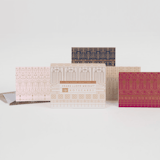10 Frank Lloyd Wright Buildings We Love
The leader of the Prairie School movement of architecture, Wright was an American architect who designed structures that were in harmony with their environment—a philosophy he called organic architecture. We’ve rounded up ten of Frank Lloyd Wright’s modernist structures that we love—all of which seem just as contemporary today as they did when they were originally built.
Fallingwater
Mill Run, Pennsylvania
Often considered one of Wright’s greatest masterpieces and his most iconic work, Fallingwater was built as three levels that are engulfed in nature, and sit over a 30-foot waterfall in Mill Run, Pennsylvania.
The Seth Peterson Cottage
Reedsburg, Wisconsin
This Frank Lloyd Wright-designed building is actually a rental. Located on a bucolic Wisconsin lakeside, the modernist cabin packs a lot into only 880 square feet and could be your very own chance to stay in a Wright abode.
Hollyhock House
Los Angeles, California
Wright’s first L.A. project, the construction of the iconic Hollyhock House, was filled with all the drama of Hollywood. Built between 1919 and 1921 for Aline Barnsdall, a wealthy oil heiress—Wright used an open concept plan and incorporated outdoor sleeping porches in an attempt to create a strong connection to nature. It was an experimental and forward-thinking design element that both Richard Neutra and Rudolph Schindler eventually also adapted into their L.A. designs. Surprisingly enough, it was never actually lived in.
The Solomon R. Guggenheim Museum
New York, New York
Wright’s last major work—and one of his most iconic—sadly didn’t open until six months after the architect’s death. Nevertheless, the Guggenheim Museum is one of the most important pieces of American architecture and is considered to be Wright’s most important contribution.
The Burnham Houses
Milwaukee, Wisconsin
The only grouping of Frank Lloyd Wright's early American System-Built Homes—built by Arthur Richards and designed with standardized components for mass appeal to moderate-income families—is situated in the Burnham Park neighborhood in Milwaukee, Wisconsin. The four model 7A duplexes, one model B1 bungalow (shown here), and model C3 bungalow were added to the National Register of Historic Places in 1985.
The half-dozen duplexes and bungalows known as the American System-Built Homes, were built between 1915 and 1917 in the Burnham Park neighborhood of Milwaukee, Wisconsin. Constructed with precut factory lumber to save on labor costs, the homes were Wright’s first attempts at architecture for moderate-income families.
Taliesin West
Scottsdale, Arizona
Now the main campus of the Frank Lloyd Wright School of Architecture, Taliesin West was Wright’s winter home in Scottsdale, Arizona.
Taliesin (1911)
Spring Green, Wisconsin
The site of Wright’s primary studio and his summer home, Taliesin was built on the land of his childhood home in Spring Green, Wisconsin. The name Taliesin was derived from the Welsh term for radiant or shining brow, as the main housing complex was built on a hill that overlooked the land. Rebuilt twice during Wright’s lifetime, it’s one of the structures that’s most commonly associated with the architect.
Robie House
Chicago, Illinois
The Frederick C. Robie house established a new concept for open-plan living that no longer relied on walls to designate the interior spaces, and is one of the best examples of Wright’s Prairie style.
The Yodokō Guest House
Hyogo, Japan
While Frank Lloyd Wright’s fascination with Japan was well known, the architect was also a collector and dealer of Japanese prints. The Yodokō Guest House was built as a summer villa for Tazaemon Yamamura, a prosperous sake brewer, and set in the hills overlooking the Port of Kobe. It’s the only surviving Wright residence in Japan. Reminiscent of Wright’s Los Angeles residences—this home demonstrates his genius for spacial composition, while creating a dialog between his organic style and traditional Japanese home design.
The Goetsch-Winckler House
Okemos, Michigan
Located on a 1.7-acre triangular-shaped lot in a residential neighborhood in Michigan, this one-story Usonian house is a Wright classic.
Shop Frank Lloyd Wright's Designs
Published
Last Updated
Get the Pro Newsletter
What’s new in the design world? Stay up to date with our essential dispatches for design professionals.













